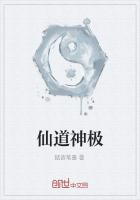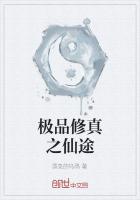A FINE CLIMATE
The climate of Arizona as described in the local vernacular is "sure fine." The combination of elements which make the climate is unusual and cannot be duplicated elsewhere upon the American continent. The air is remarkably pure and dry. Siccity, indeed, is its distinguishing feature. That the climate is due to geographical and meteorological conditions cannot be doubted, but the effects are unexplainable by any ordinary rules.
The region involved not only embraces Arizona, but also includes portions of California and Mexico and is commonly known as the Colorado Desert. Yuma, at the junction of the Gila and Colorado rivers, is approximately its geographical center. The general aspect of the country is low and flat and in the Salton sink the dry land dips several hundred feet below the level of the ocean.
Only by extreme siccity is such land possible when more water rises in evaporation than falls by precipitation. There are but few such places in the world, the deepest one being the Dead Sea, which is about thirteen hundred feet lower than the ocean.
The Colorado Basin is the dry bed of an ancient sea whose shore line is yet visible in many places upon the sides of the mountains which surround it. Its floor is composed of clay with deposits of sand and salt. Strong winds sometimes sweep over it that shift and pile up the sand in great dunes. The entire region is utterly bare and desolate, yet by the use of water diverted from the Colorado river it is being reclaimed to agriculture.
The rainfall is very scant the average annual precipitation at Yuma being less than three inches. The climate is not dry from any lack of surface water, as it has the Gila and Colorado rivers, the Gulf of California and the broad Pacific Ocean to draw from. But the singular fact remains that the country is extremely dry and that it does not rain as in other lands.
Neither is the rainfall deficient from any lack of evaporation.
Upon the contrary the evaporation is excessive and according to the estimate of Major Powell amounts fully to one hundred inches of water per annum. If the vapors arising from this enormous evaporation should all be condensed into clouds and converted into rain it would create a rainy season that would last throughout the year.
The humidity caused by an abundant rainfall in any low, hot country is usually enough to unfit it for human habitation. The combined effect of heat and moisture upon a fertile soil causes an excess of both growing and decaying vegetation that fills the atmosphere with noxious vapors and disease producing germs. The sultry air is so oppressive that it is more than physical endurance can bear. The particles of vapor which float in the atmosphere absorb and hold the heat until it becomes like a steaming hot blanket that is death to unacclimated life. All of this is changed where siccity prevails. The rapid evaporation quickly dispels the vapors and the dry heat desiccates the disease creating germs and makes them innocuous.
The effect of heat upon the body is measured by the difference in the actual and sensible temperatures, as recorded by the dry and wet bulb thermometers. When both stand nearly together as they are apt to do in a humid atmosphere, the heat becomes insufferable. In the dry climate of Arizona such a condition cannot occur. The difference in the two instruments is always great, often as much as forty degrees. For this reason, a temperature of 118 degrees F. at Yuma is less oppressive than 98degrees F. is in New York. A low relative humidity gives comfort and ******* from sunstroke even when the thermometer registers the shade temperature in three figures.
A dry, warm climate is a stimulant to the cutaneous function.
The skin is an important excreting organ that is furnished with a large number of sweat glands which are for the dual purpose of furnishing moisture for cooling the body by evaporation and the elimination of worn out and waste material from the organism. As an organ it is not easily injured by over work, but readily lends its function in an emergency in any effort to relieve other tired or diseased organs of the body. By vicarious action the skin is capable of performing much extra labor without injury to itself and can be harnessed temporarily for the relief of some vital part which has become crippled until its function can be restored.
A diseased kidney depends particularly upon the skin for succor more than any other organ. When the kidneys from any cause fail to act the skin comes to their rescue and throws off impurities which nature intended should go by the renal route. For this reason diabetes and albuminuria, the most stubborn of all kidney diseases, are usually benefited by a dry, warm climate. The benefit derived is due to an increase of the insensible transpiration rather than to profuse perspiration. The air of Arizona is so dry and evaporation so rapid that an increase in perspiration is scarcely noticeable except when it is confined by impervious clothing. The disagreeable feeling of wet clothes which accompanies profuse perspiration in a damp climate is changed to an agreeable sensation of coolness in a dry one.















